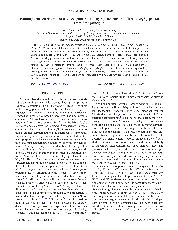摘要
The electronic structures and impurity formation energies of alpha-Nb(5)Si(3), beta-Nb(5)Si(3), and gamma-Nb(5)Si(3) doped with Ti, V, Mo, Cr, W, Zr, and Hf additions in different sublattices have been investigated with the first-principles pseudopotential plane-wave method based on density functional theory. The bonding characteristics of the undoped and doped alpha-Nb(5)Si(3), beta-Nb(5)Si(3), and gamma-Nb(5)Si(3) are analyzed with the valence charge densities and Mulliken overlap populations as well as partial density of states. The results show that the alloying elements with larger atomic size than Nb prefer to substitute the Nb in less closed space and the atoms with smaller atomic size than Nb prefer to substitute the Nb in more closed space in alpha-Nb(5)Si(3), while these alloying elements present the opposite behavior in beta-Nb(5)Si(3) and gamma-Nb(5)Si(3). These behaviors can be explained by bonding characteristics: strong antibonds in beta-Nb(5)Si(3) and gamma-Nb(5)Si(3) are observed, whereas no antibonds in alpha-Nb(5)Si(3) exist. The influences of the additions on phase stability difference between alpha-Nb(5)Si(3) and beta-Nb(5)Si(3) are also discussed.
- 出版日期2007-11
- 单位北京航空航天大学
